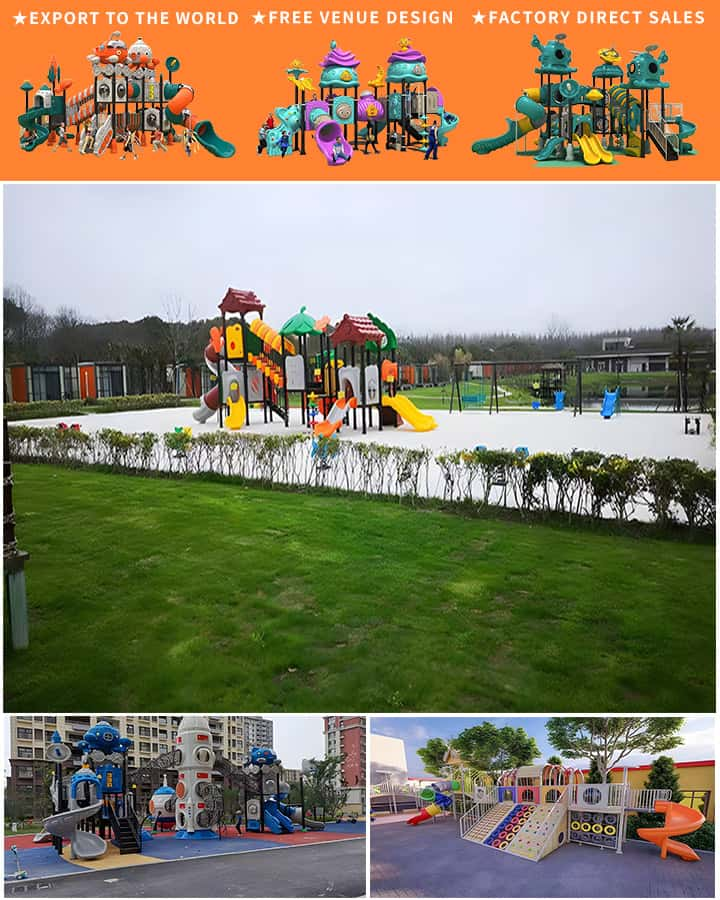Outdoor playgrounds are a cornerstone of childhood, offering a space where kids can expend their energy, foster social skills, and engage in imaginative play. Whether you’re planning an outdoor playground for your backyard, a local park, or a community center, there are several key factors to consider to create a safe, enjoyable, and developmentally beneficial environment. Here’s how to design the ultimate outdoor playground.
Planning the Layout
Choose the Right Location
The first step in creating an exceptional outdoor playground is selecting the right location. Ensure the area is spacious enough to accommodate various types of equipment and has soft, safe ground material such as rubber mulch, wood chips, or sand. Adequate shade should also be available to protect children from the sun, which is crucial during hot weather.
Age-Appropriate Design
Different age groups have varying needs and capabilities. Incorporate areas specifically designed for toddlers, preschoolers, school-age children, and even a section for teens. This ensures that all children can enjoy the playground safely. For instance, toddlers need low-to-the-ground equipment with gentle slopes, while school-age kids can benefit from more challenging climbers and slides.
Essential Playground Equipment
Swings
Swings are a classic component of any playground and provide excellent opportunities for developing motor skills and balance. Consider including a variety of swings such as traditional single-person swings, baby swings, and adaptive swings to cater to all abilities.
Slides
Slides offer endless fun and are great for encouraging physical activity. Opt for different types of slides—like straight slides, spiral slides, and tube slides—to keep things exciting. Ensure they have safety rails and are appropriately angled to prevent injuries.
Climbers and Jungle Gyms
Climbing structures promote strength, coordination, and problem-solving skills. Jungle gyms with ladders, ropes, and climbing walls are fantastic options. They challenge children to navigate through different routes, fostering creativity and teamwork.

Sandboxes and Water Features
Interactive features like sandboxes and water tables encourage sensory exploration and cooperative play. A sandbox allows children to dig, build, and create, promoting fine motor skills and imagination. Similarly, water features can offer cooling relief during hot days and introduce basic principles of science through playful experimentation.
Safety First
Surfacing Material
Safety starts with what lies beneath—or rather, around—the playground equipment. Non-toxic, shock-absorbent materials like rubber mats, poured rubber, or pea gravel can significantly reduce the risk of injury from falls. Make sure the surfacing extends at least six feet around all playground equipment.
Regular Maintenance
Keeping the playground in top condition is essential for safety. Regular inspections should be conducted to check for loose bolts, rusted metal, or damaged parts. Ensure that equipment remains sanitary by cleaning surfaces periodically, especially high-touch areas like handrails and seat backs.
Supervision
Adult supervision is critical to ensuring a safe play environment. Trained supervisors should be present to monitor children’s activities, enforce rules, and address any issues that arise promptly.
Inclusive Accessibility
ADA Compliance
An inclusive playground welcomes every child, regardless of their abilities. Design pathways, ramps, and transfer points according to the Americans with Disabilities Act (ADA) standards. Inclusive features such as wheelchair-accessible carousels, sensory-rich panels, and adaptive swings ensure that children with disabilities can participate fully in playtime activities.
Diverse Play Options
Incorporating diverse play options allows children with different interests and abilities to find joy in the playground. From musical instruments and quiet zones for introverted children to dynamic play structures for the more adventurous ones, variety is key.
Community Engagement
Educational Opportunities
Outdoor playgrounds can serve as informal educational spaces. Incorporate elements like maps, compass challenges, or themed play areas (e.g., farms, cities, forests) to spark curiosity and learning. Interactive signs explaining the science behind natural elements or historical facts about the area can turn a simple visit into an enriching experience.
Events and Programs
Community engagement can be enhanced by organizing events or programs at the playground. Activities like story hours, nature walks, or fitness classes bring families together and make the most of the outdoor space. Partnering with local schools or organizations can help organize these events and provide additional resources.
Sustainability
Eco-Friendly Materials
Choosing sustainable materials not only benefits the environment but also sets a positive example for children. Opt for recycled plastics, sustainably sourced wood, and non-toxic finishes. Incorporate native plants and trees around the playground to enhance its aesthetic appeal and provide natural shade.
Environmental Education
Teaching children about the importance of environmental stewardship can be integrated into the playground experience. Create areas dedicated to composting, recycling demonstrations, or even small gardens where kids can learn about planting and growing their own vegetables.
Creating the ultimate outdoor playground involves thoughtful planning, attention to safety, and a focus on inclusivity and sustainability. By considering these key aspects, you can develop a space where every child can thrive, learn, and simply have fun. So go ahead—let your imagination run wild and start building the playground of dreams today!




